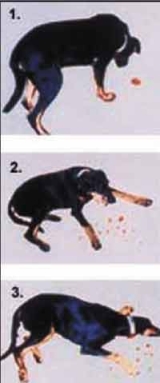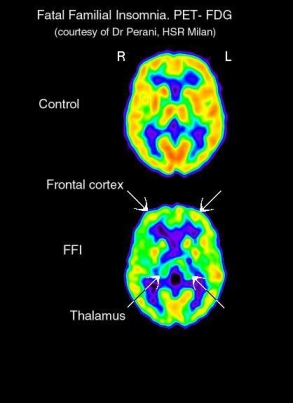The pathology of sleep
Sleep disturbances are quite common in our society. The most common disturbance is insomnia. In 70-80% of cases, however, insomnia is secondary to unfavourable environmental or working conditions or the direct consequence of other organic or psychic pathologies. In other patients we see the opposite problem: an excess of tiredness or daytime ipersonnia, especially as a result of a complaint known as the "Obstructive apnea in sleep syndrome"/"Sindrome delle apnee ostruttive nel sonno", which does not allow the patient (often obese and a snorer), to sleep enough at night.
 |
The most common type of ipersonnia amongst those that do not depend on other pathologies is
narcolepsy![]() .
In those affected, an excessive daytime drownsiness accompanied by
uncontrollable attacks of sleep is often combined with the outbreak of
"cataplectic" attacks, characterized by a sudden loss of muscle tone.
During these attacks, which are often caused by sudden excitement, the
patient may fall to the ground and not move for several minutes, while
remaining in a state of waking consciousness.
.
In those affected, an excessive daytime drownsiness accompanied by
uncontrollable attacks of sleep is often combined with the outbreak of
"cataplectic" attacks, characterized by a sudden loss of muscle tone.
During these attacks, which are often caused by sudden excitement, the
patient may fall to the ground and not move for several minutes, while
remaining in a state of waking consciousness.
Recently, research carried out on a strain of dogs genetically affected
by narcolepsy, which all had the typical symptoms of the disease (Fig. 1),
has shown the link between this pathology and anomolies in the action of a
chemical substance normally produced in the rear
hypothalamus![]() ,
know as ipocretina
,
know as ipocretina![]() .
The production of ipocretina is reduced in the majority of narcoleptic patients.
.
The production of ipocretina is reduced in the majority of narcoleptic patients.
Fig. 1:
a dog genetically affected by narcolepsy; the excitement sparked by the
sight of food produces a cataplectic attack in the animal, and a sudden fall
to the ground.
(Credit:
taken from K9 Perspective on line: "Discovery of the canine
narcolepsy gene")
 |
Fatal insomnia is a very serious pathology characterised by the gradual
disappearance of sleep. In most cases it is linked to a hereditary
genetic imbalance. Typically, the disappearance of normal sleep is
associated with serious problems in the vegetative and endocrine
functions and inevitably leads to death. In some areas of the brain,
metabolic activity is reduced (areas shown by the arrows in the PET
image, Fig. 2) and we can see a deposit of anomalous
"prioni
Fig. 2: : Image obtained using a "positron emission tomograph" (PET |
The Webweavers: Last modified Mon, 8 Feb 2006 11:11:15 GMT